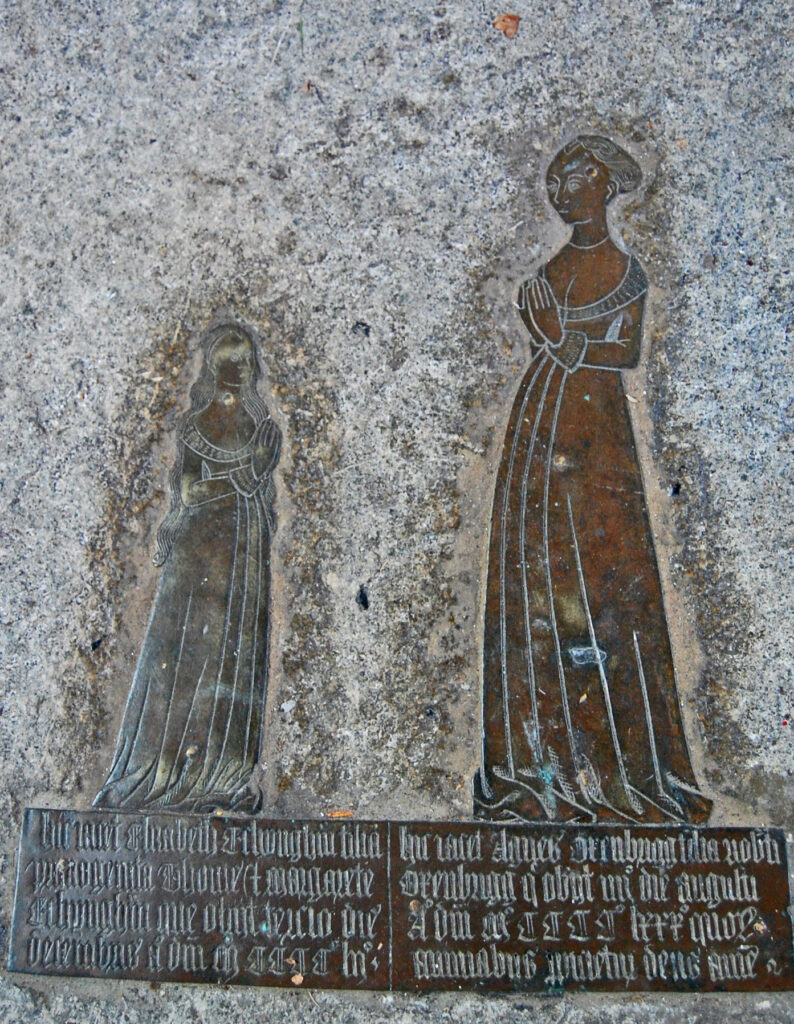
Brass of Agnes Oxenbridge and Elizabeth Etchingham
Artist: Unknown (London Workshop F)
Media: Brass
Date & Location: c. 1480, Etchingham Parish, Sussex
Image Source: Wikimedia Commons
Significance to Queer Art History
Etchingham Parish and The Brass of Agnes Oxenbridge and Elizabeth Etchingham is where this art historian dreams of making a lesbian pilgrimage. This brass is a memorial commemorating two women who were buried together with an inscription requesting God’s mercy for them both. Elizabeth appears on the left with her hair down and she is smaller than Agnes. This is likely representative of her being both unwed and young when she died in 1452 in her mid-twenties. Agnes is shown on the right and (although she too seems to have remained unwed) she is shown as a more mature woman likely because she was in her fifties when she died in 1480. Bennett finds evidence for both women remaining unwed in the lack of head coverings, lack of records (both marriage records and records of their lives as was often the case with single women), and lack of any mention of husbands on the memorial (Bennett, 133). She also describes how this brass was designed in the style of contemporary memorial brasses for married couples, but with additional intimacy. Unlike the contemporaneous brasses, which often show couples looking straight ahead, Agnes and Elizabeth face each other and look into each other’s eyes (Bennett, 134).
There also seems to have been no qualms about the relationship between these two women. It was unusual that Agnes be buried with Elizabeth instead of in the Oxenbridge mausoleum, but both families must have agreed for it to have happened and in turn chosen to commission such an intimate memorial (Bennett, 133). The initial request for the site of burial, as Bennett suggests, most likely came from the lost will of Agnes herself.
This brass is also interesting for the notable attempts to fit it into cis-heteronormative expectations of history. Bennett writes “some have described the brass as a memorial to two children [despite them both living into adulthood]; others have imagined they were looking at two entirely separate brasses [despite the inscription referring to them both and their being connected]; and still others have fiddled with genealogies to minimize any direct relationship between the two women (Bennett, 131).” She attributed these manipulations to homophobic anxieties, which result in “bad history” and argues for the place of Elizabeth and Agnes in the “histories that modern… queers rightly seek from the past (Bennett, 136 and 141).”
Resource(s)
Judith M. Bennett, “Remembering Elizabeth Etchingham and Agnes Oxenbridge,” in The Lesbian Premodern, edited by Noreen Giffney, Michelle M. Sauer, and Diane Watt. New York: Palgrave Macmillan, 2011.
